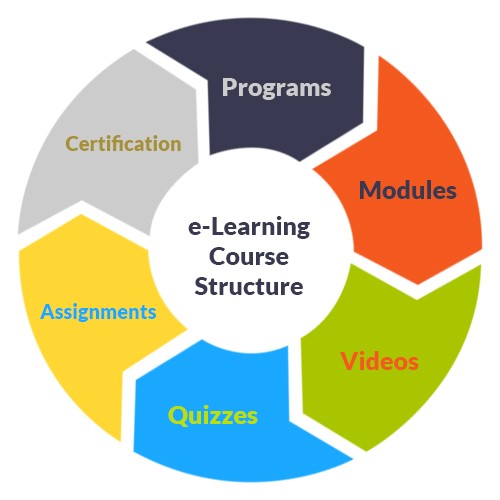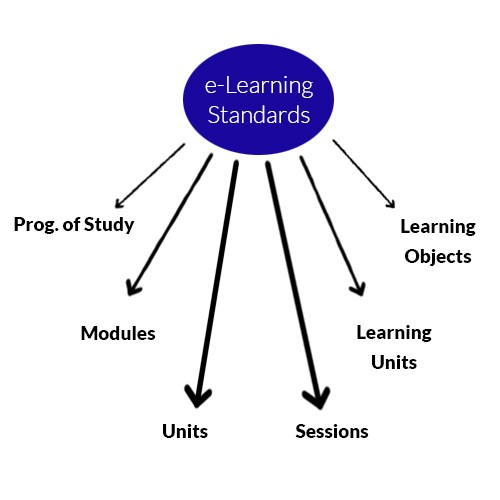Discover e-Learning Standards & it’s Advantages
e-Learning is expanding its wings rapidly in the current education system. e-Learning is an affordable solution that provides students with the ability to learn in their Comfort Zone and make their schedules efficiently.
It is the delivery of a learning, training or education program ONLINE, or on an e-Learning Platform is e-Learning.
The process or structure of e-Learning in the diagram below.

structure of elearning
Check e-Learning Standards-
The resolution of e-Learning depends upon the successful movement of existing pedagogically sounds of courses elements into the e-Learning structure. Thus, the standards are interpreted in the diagram below:

elearning Standards
In the conventional face-to-face teaching process, the module gets divided into 20 hours of lectures, additional activities, and evaluation. In e-learning environment the concept of a “lecture,” is unavailable and it is to be moved to place lecture notes online, or to compose an e-lecture, we surely shouldn’t be looking at 1 hour of delivery of such materials.
It is essential to understand the course materials and re-engineer them within proper sessions which get created from Learning Units. A Learning Unit is an exercise, i.e., reading, listening, assessing, writing, etc. where each Learning Unit is no longer than 20 minutes of online activity.
A Learning Unit contains:
- learning content,
- evaluation,
- resource study
- or communication.
Let’s check out the Advantages of e-Learning-
Advantages of e-Learning include that it can be:
- The best A4 of e-Learning – Anytime, Any Place, Any Pace, Any Subject: e-Learning elements can be accessed at the most comfortable time for the learning if the course matter is well created then learning can take place in small sections and can be customized to suit the learner’s requirements.
- Empowerment: Students are in charge of their learning.
- Versatility: e-Learning element can be accessed in a non-sequential way, empowering students to navigate content in various ways, or gain a global view before taking the details of individual members.
- Cost Efficient: vast numbers of learners can have access to the same stuff but can be held by peer-to-peer or student-to-tutor support assistance thus it reduces the cost of delivery.
- Up-to-date Content: Course content is found in one place so it can be quickly updated and can present direct links to supporting materials such as Internet and library sources.
- Tailored Education: the time required to learn a singular topic or skill is decreased or “compressed” as learning can be changed to suit the user’s demands and requirements. E-learning can give a variety of learning activities including interactive components.
- Socio-inclusive: learners can learn in a comparatively unknown environment without the embarrassment of failure and socio-cultural bias from personal communication.
- Consistent: all learners get the same standardized set of study materials from e-learning.
- Interactive: well-constructed study materials will have elements of interactivity through simulations etc. which will implement the learning.
- Collaborative: The performance of groups and teams working together in collaborative learning and learner-learner communication enforces employability skills.
- Applied To Track Student Performance: student practice of the materials is monitored, and initial potential drop-out can be identified and given corrective support.
- Used to Facilitate knowledge: The understanding of ideas by suggesting alternative methods of visualizing documents and alternative solutions to those provided in a single delivery mode such as a lecture, seminar or tutorial.
For example- Multimedia and hypermedia.
- Get Instant feedback: Get Quick reply from online self-assessment or moldable assessment mainly through MCQs, i.e., multiple choice question formats.
- Self Assessment: learners can be extended automatically-marked self-assessment activities to identify skill/knowledge levels and learning requirements before joining with course content.
- To assist students with specific Disabilities: Introduction for students with hearing and some physical disabilities may heighten.
